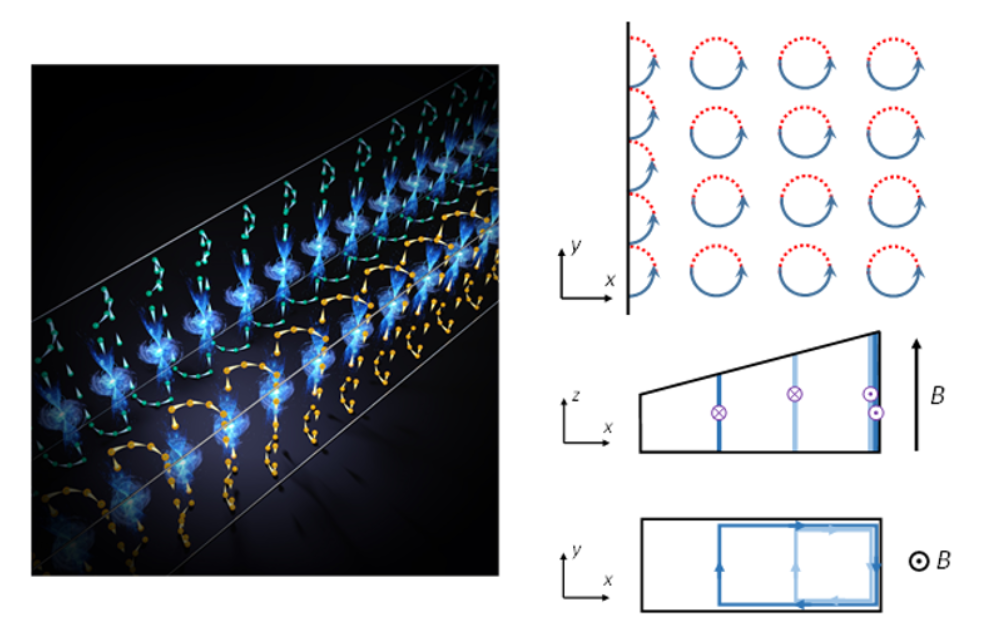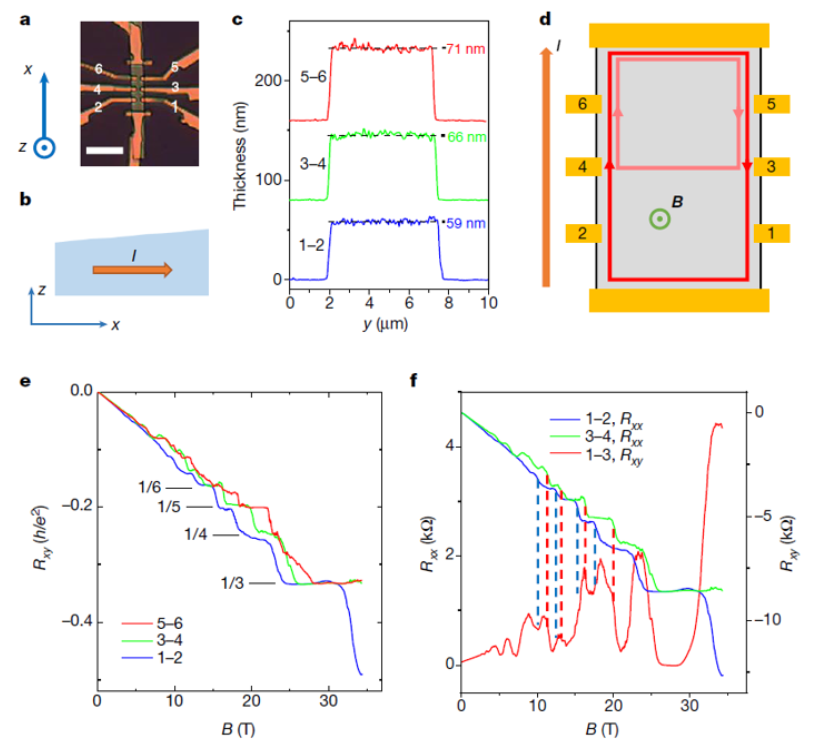
Using the High Magnetic Field Facility (SHMFF) at High Magnetic Field Laboratory, Chinese Academy of Sciences (CHMFL), scientists from Fudan University discovered quantum Hall effect based on Weyl Orbits in the wedge-shaped Cd3As2 nano-device.
Several decades ago, the quantum Hall effect remains one of the most studied phenomena in condensed matter physics and is relevant for research areas such as topological phases, strong electron correlations and quantum computing.
However, whether the quantum Hall effect can be extended to higher dimensions without simply stacking two-dimensional systems is unknown.
Dirac and Weyl semimetals both have pairs of monopoles of the Berry curvature in 3D momentum space (also known as Weyl nodes). A typical example of a Dirac semimetal is Cd3As2 with two opposite pairs of Weyl nodes overlapping in the axis.
Theoretically, when the 3D bulk is terminated by a 2D surface, exotic surface states appear in the form of Fermi arcs connecting the surface projections of pair.
Experimentally, the quantum Hall effect was recently observed in the surface states of Cd3As2 nanostructures, but it remains unclear whether it is due to the Weyl orbits or to the topological-insulator-type.
SHMFF users from Fudan University investigated the quantum Hall effect for the wedge-shaped Cd3As2 nano-device.
The experimental results demonstrated that the quantum Hall transport for Cd3As2 nanostructure was strongly modulated by the sample thickness.
Moreover, the dependence of the Landau levels on the magnitude and direction of the magnetic field and on the sample thickness agreed with theoretical predictions based on the modified Lifshitz–Onsager relation for the Weyl orbits.
All these results indicated that the quantum Hall effect observed here was a new type of quantum Hall effect based on Weyl orbits.
These findings provide a way of exploring quantum Hall physics in three-dimensional materials with enhanced tunability.
This work was supported by the Youth Innovation Promotion Association CASand theUsers with Excellence Project of Hefei Science Center CAS.

Fig.1 The quantum Hall effect in Weyl orbits. (Image by ZHANG cheng and XIU Faxian)

Fig.2 Quantum Hall effect in Cd3As2 nanostructure, which is wedge-shaped along the x axis. (Image by ZHANG cheng and XIU Faxian)

86-10-68597521 (day)
86-10-68597289 (night)

52 Sanlihe Rd., Xicheng District,
Beijing, China (100864)

